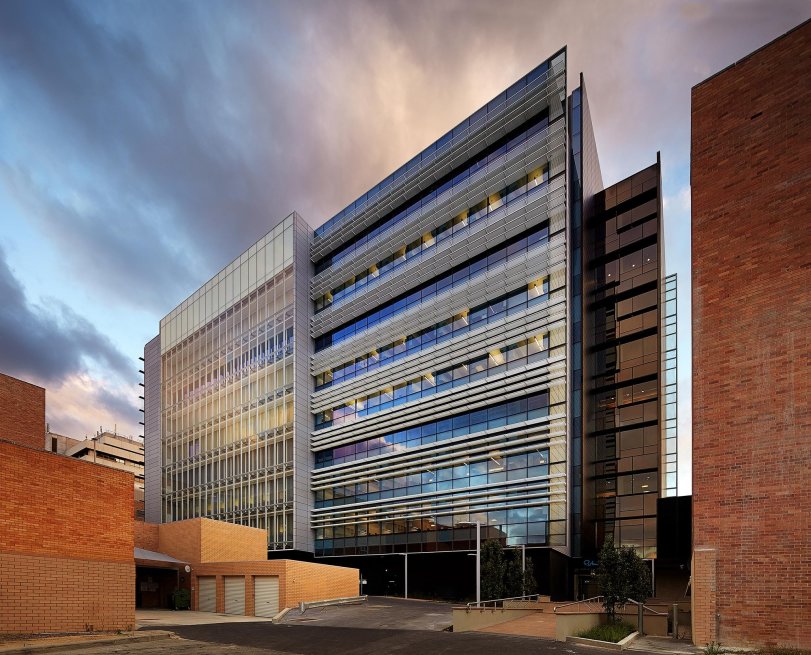The most remarkable architectural quality about the Harry Perkins Institute of Medical Research is not just its beauty – although it’s a handsome building.
What sets the Institute’s new home apart is its dramatic departure from the orthodoxy of laboratory design. The innovative building fosters a new way for researchers to conduct their work and collaborate, with the aim of reaching ever higher outcomes for the Australian public.
Traditionally research buildings are designed as a “three-layered cake - two layers of laboratories and one layer of offices”, says Hames Sharley director, James Edwards, who headed the project team. “We became interested in whether that type of design really fostered good research.”
Before putting pencil to paper the Hames Sharley team carried out extensive research around Australia and overseas, and found that the conventional designs had drawbacks. Happy accident plays a vital role in research discoveries, and the traditional approach just isn’t keeping up with the way that the best research is carried out.
“We proposed a radically different approach built around a central highly activated core, with the laboratories running north to south with natural light on two sides” says Edwards. “To move between the offices and the laboratories researchers move through the centre, which houses the meeting rooms, lunch rooms, lifts, toilets, and a striking chromosome inspired stairway that spirals up the centre of the building’s 10 storeys.” The walls around this stair display super-sized colour projections of the researchers’ work, highlighting, Edwards says, the value and importance of their work to us all.
As researchers encounter each other in these central spaces, relationships build, and ideas are exchanged. It’s a more collaborative, social and productive way to work.

Hames Sharley created highly flexible open-plan work spaces, which are best suited to accommodate ongoing changes in research. When concentration or privacy is needed, enclosed spaces have been provided in quiet zones throughout the building for shared use. Anxieties about the open-plan design of the laboratories largely melted away once staff moved into the building and experienced the exceptional qualities of natural light and the feeling of being connected with each other. Edwards says: “A common observation from staff is that it is a ‘feel-good building’. We designed the windows using the largest panes of glass the builder could transport. This gives a very special quality, plus exceptional views of the leafy surroundings.”
Laboratory buildings are complex and technically demanding. “Spaces can be visually chaotic and uncomfortable to work in,” Edwards says. Using pale surfaces throughout to reflect natural light, Hames Sharley has created elegant interiors, enriched with the subtle use of colour and natural materials to give the building a warm and comfortable feel.






